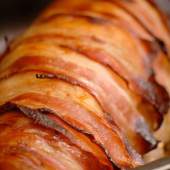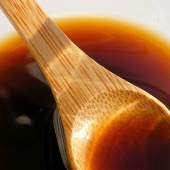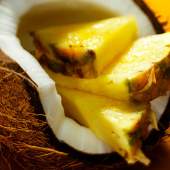China

“Anything that walks, swims, crawls, or flies with its back to heaven is edible.”
– Cantonese proverb
“Like all Jews, I was probably at a Chinese restaurant.”
– Elena Kagan, Associate Justice of the U.S. Supreme Court, on where she spent Christmas
Doesn’t everyone have a favorite Chinese restaurant, and dishes that they love to order again and again? This week on Check, Please!, as our reviewers share their opinions on Chinatown’s Qing Xiang Yuan (QXY Dumplings), we thought it was time for a little primer on this tasty and healthful cuisine.
Chinese food is all about freshness and balance: each meal, ideally, should incorporate five different essences: sweet, salty, bitter, sour, and spicy. How these are realized depends upon where the food was grown, processed, and cooked: in China, there are eight main culinary styles by region (with some subcategories within them). As you’ll see, each has quite distinctive cooking styles, ingredients, and prevalent flavors:
- Cantonese – Chances are, if you dine at a Chinese restaurant in the U.S., you’re probably enjoying Cantonese food, which is the most popular style internationally. This cuisine represents the southernmost province in China, which includes Hong Kong and Guangzhou, and its long coastline ensures that seafood is a staple, with rice incorporated into most dishes. Seasoning tends to be light, incorporates sweet sauces, and is low in fat. Most dishes are steamed or stir-fried. This is where you will find dim sum, (a meal consisting of various small dishes, customarily served with tea), shahe fen (rice noodles), and white cut chicken, the signature dish of Panxi Restaurant in Guangzhou.
- Sichuan – If you like your Chinese food really spicy, Sichuan is for you. The addition of Sichuan peppercorn to a dish will literally numb the inside of your mouth, but that isn’t all – this cuisine routinely incorporates chilies, ginger, garlic, cinnamon, fennel, clove, aniseed, and other spices. Popular dishes include Kung Pao (spicy diced) chicken, mapo tofu, and Sichuan hot pot, which is a broth in which you cook various meats and vegetables, as in fondue. Great for the common cold!
- Hunan – Once again, if sinus-clearing spicy food is your thing, you will be right at home with Hunan cuisine. (Arguably, it’s even hotter than Sichuan food, and that’s saying something!) What makes it that way? Chilies, mixed with vinegar, which doesn’t create the numbing effect of Sichuan food, and is meant to stimulate the appetite. Citrus fruits are major crops here, so if your favorite dish is Orange Chicken, you’re in luck. And you can balance out the spice by starting the meal with cold cucumbers. Still, brace yourself!
- Jiangsu – This is the region that includes Shanghai, China’s most populous city, boasting the highest income per capita. Its style tends to be more on the sophisticated gourmet side, with refined flavors and an extravagant and colorful presentation. The cuisine in this area boasts a great deal of variety, incorporating forms of seafood that many Westerners have never encountered before and an array of herbs and vegetables, locally sourced, along with rice and wheat. This style is famously healthy…and has even been described by some as medicinal.
- Shandong – Shandong is the earliest civilized region in China, and like some of its neighbors, its cuisine is famous for its seafood. Dishes are seasoned with varieties of onion, garlic, and ginger, but in moderation, and with lots of salt. Vinegar is also a necessity, and some people drink it straight for medicinal purposes. This is where the “bao” style of cooking originated; essentially, stir-frying in hot oil, which gives the food a crispy exterior. Meals often include wheat noodles, rice, and peanuts.
- Zhejiang – The watchword here is “mellow.” In this eastern province that includes the city of Hangzhou, seafood is king, and foods are prepared similarly to its neighbor, Jiangsu province, but with a bit less complexity. Its main emphasis is on fresh, seasonal ingredients…in many cases, served barely cooked or entirely raw. Not too salty, not too sweet, not too sour, not too spicy…like Baby Bear’s porridge, just right. If you’re a fan of dessert, you will find it here, in spades – sweet confections are made from sugar, wheat, rice, and beans.
Hangzhou, China
- Fujian – The cuisine from this area incorporates unusual ingredients from the sea and mountains that are part of its terrain, and tends to be light, and both sweet and sour. If you are an adventurous diner, you are sure to like this style, because you are likely to find things on your plate that you’ve never seen before, some of them staring back at you! Soups incorporating seafood are especially popular here, and a wide variety of herbs and spices are used, as much for their flavor as their aromatic qualities.
- Anhui – This province is in a poorer area of the country, in the Yellow Mountains, and its cuisine is considered to be in the “mountain peasant” vein, incorporating many “wild” animal and plant ingredients unknown in the West. Their stews and soups might include anything from locally caught frogs and turtles to mushrooms and shrimp, but pork is the main meat that is used. You will also find root vegetables, including potatoes, in many dishes.
We hope you have enjoyed this little culinary travelogue! Of course, if you live in the Chicago area, there is probably a Chinese restaurant (or several) nearby. Tonight, as Check, Please! features a great Chinatown dumpling house, here are a few more that the show has featured over the years. Brush up on your chopstick skills and try them!
“Chī hǎo hē hǎo!” 吃好喝好 (“Eat and drink well!”)





